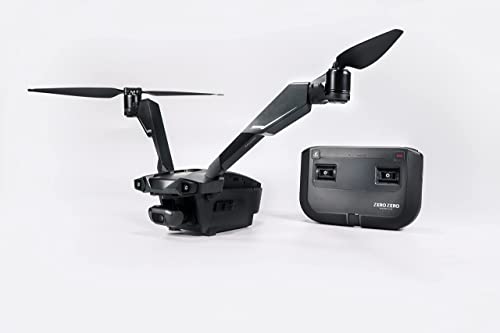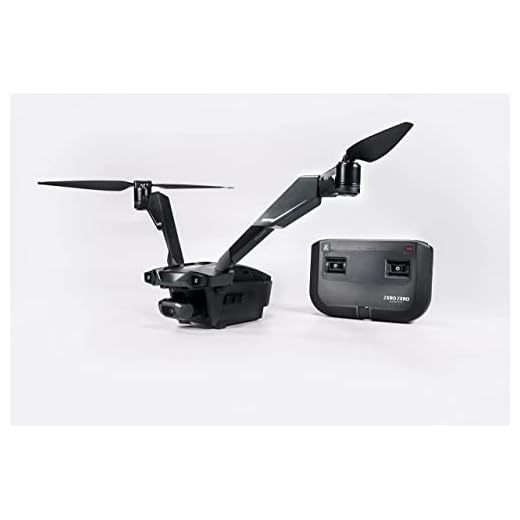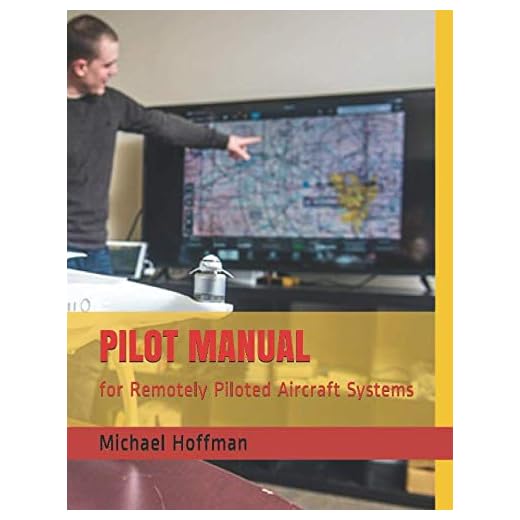




Drones, or unmanned aerial vehicles (UAVs), have become increasingly popular in recent years for a variety of purposes, including photography, surveillance, and even package delivery. However, one question that often arises is whether a drone is considered an aircraft in the eyes of the law.
According to the Federal Aviation Administration (FAA) in the United States, a drone is indeed classified as an aircraft. This means that drone operators must adhere to certain regulations and guidelines that govern the use of aircraft, such as obtaining a pilot’s license, registering the drone, and following airspace restrictions.
While drones may not resemble traditional airplanes or helicopters, they are still subject to many of the same rules and regulations that govern manned aircraft. This classification ensures the safety and accountability of drone operations in the increasingly crowded skies.
Exploring the Classification of Drones
When it comes to the classification of drones, the question of whether a drone is considered an aircraft often arises. According to the Federal Aviation Administration (FAA), drones are indeed classified as aircraft. The FAA defines an aircraft as any device used for flight in the air, which includes drones or unmanned aerial vehicles (UAVs).
Despite being classified as aircraft, drones are subject to specific regulations that differ from those governing traditional manned aircraft. These regulations aim to ensure the safe operation of drones in the national airspace and address concerns related to privacy, security, and airspace integration.
Understanding the classification of drones as aircraft highlights the importance of adhering to regulations and guidelines set forth by aviation authorities to promote safe and responsible drone operation.
Drone vs Aircraft: Legal Distinctions
When it comes to the legal realm, the distinction between a drone and an aircraft is crucial. Drones, also known as unmanned aerial vehicles (UAVs), are considered aircraft by aviation authorities such as the Federal Aviation Administration (FAA) in the United States.
However, the regulations and requirements for drones may differ from those for traditional manned aircraft. For example, drones are subject to specific rules regarding registration, flight restrictions, and pilot certification. Understanding these distinctions is essential for drone operators to comply with aviation laws and ensure safe and responsible operation of their UAVs.
While drones share many characteristics with aircraft, their unique capabilities and applications have prompted the development of specialized regulations to govern their use. As the technology continues to evolve, it is important for both regulators and operators to stay informed about the legal distinctions between drones and traditional aircraft to promote safety and accountability in the skies.
Regulatory Framework for Drones
As drones become more popular and accessible, regulatory frameworks have been put in place to ensure safe and responsible use. In many countries, drones are considered aircraft and are subject to aviation regulations. This means that drone operators may need to obtain licenses or permits, adhere to flight restrictions, and follow certain safety guidelines.
The Federal Aviation Administration (FAA) in the United States, for example, has established rules for drone operation, including registering drones, flying below 400 feet, and avoiding restricted airspace. Other countries have similar regulations in place to manage the growing number of drones in the sky.
Regulatory frameworks also address privacy concerns related to drone use. Some jurisdictions have laws that restrict where and when drones can be flown to protect individuals’ privacy rights. Additionally, regulations may require drone operators to obtain consent before capturing images or videos of private property or individuals.
Overall, the regulatory framework for drones aims to strike a balance between promoting innovation and ensuring safety and privacy. By following these regulations, drone operators can enjoy their hobby or use drones for commercial purposes responsibly and legally.
Defining the Aerial Status of Drones
When discussing whether a drone is considered an aircraft, it’s essential to understand the legal framework that defines the status of aerial vehicles. In many countries, the definition of an aircraft includes any device that is used for flight in the air. This definition can encompass traditional airplanes, helicopters, and even hot air balloons.
However, the classification of drones can be more complex. While drones are unmanned and typically smaller in size compared to traditional aircraft, they are still capable of flying in the airspace. This raises questions about whether drones should be classified as aircraft or fall into a separate category.
Regulatory bodies around the world are grappling with this issue, seeking to establish clear guidelines for the operation and classification of drones. Some argue that drones should be considered aircraft due to their ability to navigate the airspace and potential impact on aviation safety. Others suggest that drones are a unique category of aerial vehicles that require distinct regulations.
Ultimately, the debate over whether a drone is considered an aircraft hinges on how we define the boundaries of aerial activity and the responsibilities that come with operating in the airspace.
Aircraft Characteristics of Drones
While drones may not fit the traditional image of an aircraft, they share many characteristics with manned aircraft. Drones, also known as UAVs (Unmanned Aerial Vehicles), are designed to fly through the air and are capable of controlled flight. They have wings, propellers, and other aerodynamic features that allow them to generate lift and maneuver in the sky.
Furthermore, drones are subject to similar regulations and restrictions as manned aircraft. They must adhere to airspace rules, obtain necessary permits for commercial operations, and follow safety guidelines to prevent accidents. In essence, drones possess aircraft-like qualities and are treated as such in the eyes of aviation authorities.
Operating Drones in Airspace
When operating drones in airspace, it is important to adhere to regulations set forth by aviation authorities. Drones are considered aircraft and must be operated responsibly to ensure the safety of manned aircraft and people on the ground.
Key considerations when operating drones in airspace include:
- Obtaining necessary permits and licenses
- Adhering to altitude restrictions
- Maintaining line of sight with the drone
- Avoiding restricted airspace
By following these guidelines and staying informed about airspace regulations, drone operators can safely enjoy the benefits of drone technology while minimizing potential risks.
International Aviation Laws and Drones
As drones become more prevalent in the skies, questions arise about their classification under international aviation laws. The International Civil Aviation Organization (ICAO) defines an aircraft as “any machine that can derive support in the atmosphere from the reactions of the air.” This definition technically includes drones, as they fly in the air and are capable of sustained flight.
Regulations for Drones
Many countries have specific regulations governing the operation of drones to ensure safety and security in airspace. These regulations may include restrictions on where drones can fly, height limits, and requirements for operators to obtain licenses or permits.
- In the United States, the Federal Aviation Administration (FAA) has established rules for drones, including registration requirements and restrictions on flying near airports or over people.
- In the European Union, the European Aviation Safety Agency (EASA) has developed regulations for drones, known as the UAS (Unmanned Aircraft Systems) Regulations, to harmonize rules across member states.
It is essential for drone operators to familiarize themselves with the relevant laws and regulations in their country to ensure compliance and safe operation of their drones.
Drones and Aviation Safety
As drones become more prevalent in the skies, the issue of aviation safety has come to the forefront. While drones are not traditionally manned aircraft, they still pose a risk to aviation safety due to their potential to collide with other aircraft or infrastructure.
Regulations surrounding drone operation, such as altitude restrictions and no-fly zones, are designed to mitigate these risks and ensure the safe integration of drones into the airspace. However, enforcement of these regulations is crucial to prevent incidents that could compromise aviation safety.
The Role of Technology
Advancements in technology, such as geofencing and collision avoidance systems, play a key role in enhancing aviation safety in the presence of drones. These technologies help prevent drones from entering restricted airspace and minimize the likelihood of mid-air collisions.
Education and Awareness
Education and awareness campaigns aimed at drone operators and the general public are essential to promote safe drone operation and reduce the potential risks to aviation safety. Understanding the rules and responsibilities associated with drone use is crucial to ensuring the safe coexistence of drones and manned aircraft in the airspace.
Challenges in Categorizing Drones
Drones, also known as unmanned aerial vehicles (UAVs), pose unique challenges when it comes to categorizing them as aircraft. While drones share similarities with traditional aircraft in terms of flight operations, they differ in terms of autonomy and control.
One of the main challenges in categorizing drones is determining their legal status and the regulations that apply to them. Are drones considered aircraft under aviation laws? This question raises debates and discussions among regulators and stakeholders.
Another challenge is defining the capabilities and limitations of drones. With advancements in technology, drones are becoming more sophisticated, blurring the line between traditional aircraft and unmanned systems. This makes it difficult to establish clear boundaries for classification.
Moreover, the diversity of drones, ranging from small recreational models to large commercial drones, complicates the categorization process. Different types of drones may have varying levels of autonomy, payload capacity, and flight capabilities, further complicating their classification.
In conclusion, the challenges in categorizing drones stem from their unique characteristics, technological advancements, and diverse applications. As the drone industry continues to evolve, regulators will need to adapt and develop new frameworks to effectively classify and regulate these unmanned aerial vehicles.
Future of Drones in Aviation
As technology advances, drones are playing an increasingly important role in the aviation industry. These unmanned aerial vehicles have the potential to revolutionize various aspects of aviation, from delivery services to surveillance and monitoring.
1. Delivery Services
Drones are already being used in some regions for delivering small packages and goods. With further advancements in drone technology, we can expect to see drones being used for larger and more complex deliveries, potentially transforming the logistics industry.
2. Surveillance and Monitoring
Drones equipped with high-resolution cameras and sensors are being used for surveillance and monitoring purposes. In the future, drones could be used for tasks such as wildlife conservation, disaster response, and infrastructure inspection, providing a cost-effective and efficient solution.
FAQ
Is a drone considered an aircraft?
Yes, according to the Federal Aviation Administration (FAA) in the United States, a drone is considered an aircraft. Drones are subject to the same regulations and rules as traditional manned aircraft.
Are there any differences between drones and traditional aircraft?
While drones are considered aircraft by the FAA, there are some differences between drones and traditional manned aircraft. Drones are typically smaller and unmanned, and are often used for recreational or commercial purposes.
What are the implications of drones being classified as aircraft?
Classifying drones as aircraft means that they are subject to the same regulations and restrictions as traditional manned aircraft. This includes requirements for registration, licensing, and adherence to airspace regulations to ensure safety and security.






